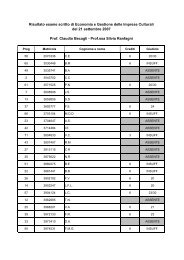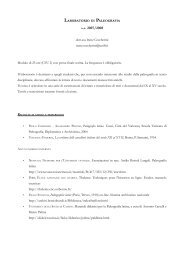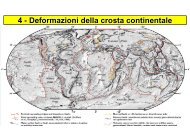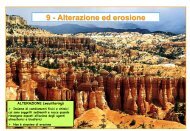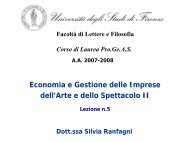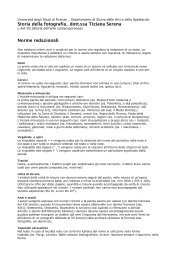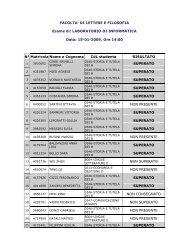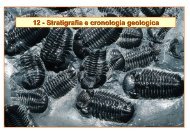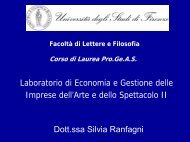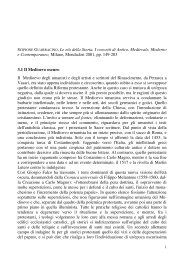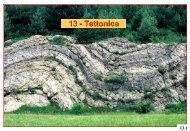Beyond Pragmatics. Morphosyntactic Development in Autism.pdf
Beyond Pragmatics. Morphosyntactic Development in Autism.pdf
Beyond Pragmatics. Morphosyntactic Development in Autism.pdf
Create successful ePaper yourself
Turn your PDF publications into a flip-book with our unique Google optimized e-Paper software.
J <strong>Autism</strong> Dev Disord<br />
Table 3 Quantitative assessments of language ability<br />
<strong>Autism</strong> M (SD) DD M (SD) TD M (SD) Group Differences<br />
No. Utterances b 94.63 (10.40) 97.38 (10.50) 92.81 (16.34)<br />
Range 69–100 58–100 50–100<br />
Mean length of utterance (MLU) 2.97 (1.15) 4.07 (1.17) 3.61 (1.10) Aut < DD**Aut < TDà<br />
Range 0.78–5.02 2.13–6.26 1.71–5.39<br />
Index of Productive Syntax (IPSyn) a 55.28 (17.99) 70.94 (14.05) 76.81 (15.30) Aut < TD*** Aut < DD**<br />
Range 11–77 36–84 40–100<br />
IPSyn age equivalent 28 months 35 months 41 months<br />
Infit Mean Sq: IPSyn<br />
Verb phrases 1.02 (.34) 1.06 (.38) .90 (.29)<br />
Sentence structures 1.14 (.70) 1.0 (.48) .89 (.40)<br />
Questions, negations 1.23 (.78) .81 (.49) .76 (.55) Aut > TD* Aut > DDà<br />
Noun Phrases 1.15 (1.14) .62 (.93) .21 (.29) Aut > TD*<br />
a Scores could range from 1 to 118<br />
b Number of utterances on the IPSyn (100 = maximum). The median <strong>in</strong> all groups was 100<br />
à p < .10, * p < .05, ** p < .01, *** p < .001<br />
The transcripts were scored for the presence of 56<br />
different syntactic and morphological forms of progressively<br />
greater complexity, rang<strong>in</strong>g from one-word<br />
utterances to fluent speech; see Appendix Table 7.<br />
Each utterance was scored <strong>in</strong> turn and one po<strong>in</strong>t was<br />
scored for each occurrence of a morphosyntactic<br />
structure (maximum of two po<strong>in</strong>ts per structure). For<br />
example, the utterance ‘‘an iron’’ would give credit<br />
for the follow<strong>in</strong>g: (a) <strong>in</strong>tonational question; (b) use of a<br />
noun; and (c) two-word comb<strong>in</strong>ation of article plus<br />
noun. A grammatical structure could be given credit<br />
even if it was used <strong>in</strong>accurately, i.e., the past tense<br />
morpheme <strong>in</strong> ‘‘*It maked it a twirl th<strong>in</strong>g.’’ <strong>Morphosyntactic</strong><br />
structures were divided <strong>in</strong>to four subscales<br />
(Verb Phrases, Noun Phrases, Questions and Negations,<br />
and Sentence Structures), and summed for an<br />
overall score.<br />
Other Measures<br />
In addition to the syntactic assessments, the transcriptions<br />
were assessed on a variety of dimensions: (a)<br />
<strong>Development</strong>al scatter of grammatical structures; (b)<br />
Grammatical errors; (c) Type-token ratio for lexical<br />
items; (d) Jargon production; (e) Present/absent topic<br />
use; and (f) Turn-tak<strong>in</strong>g as a measure of pragmatic<br />
discourse ability. These analyses are described <strong>in</strong> detail<br />
<strong>in</strong> the results.<br />
Reliability<br />
The free play sessions were transcribed by the first<br />
author or one of two research assistants, and the first<br />
author reviewed all transcriptions <strong>in</strong> full. Because the<br />
experimenter had <strong>in</strong>terviewed parents and worked<br />
with the participants, she was not necessarily naïve to<br />
participants’ developmental status dur<strong>in</strong>g transcription.<br />
Thus, ma<strong>in</strong>ta<strong>in</strong><strong>in</strong>g high standards for reliability<br />
across naïve and non-naïve coders was particularly<br />
important. Follow<strong>in</strong>g (Demuth, 1996), 8% (n =6)of<br />
the videotapes were <strong>in</strong>dependently transcribed for<br />
reliability by two coders. Word for word reliability<br />
(product-moment correlation; Cohen, 1960) was<br />
r = .90, v 2 (1) = 8.96, p=.01. Reliability for cod<strong>in</strong>g of<br />
other measures is described <strong>in</strong> the results.<br />
Results<br />
Prior to all <strong>in</strong>ferential statistics, dependent variables<br />
were exam<strong>in</strong>ed for deviations from the assumptions of<br />
normality and sphericity and were found to be normally<br />
distributed. In addition, analyses reported below<br />
were repeated, with PPVT-III scores entered as a<br />
covariate, to control for lexical differences. This additional<br />
analysis did not lead to changes <strong>in</strong> any f<strong>in</strong>d<strong>in</strong>gs,<br />
with one exception <strong>in</strong> MLU f<strong>in</strong>d<strong>in</strong>gs, described below.<br />
Mean Length of Utterance (MLU). Participants’<br />
language was assessed with respect to MLU; see<br />
Table 3. A one-way ANOVA revealed a significant<br />
group difference <strong>in</strong> total MLU, F(2,45) = 3.78, p=.03.<br />
Post hoc analyses <strong>in</strong>dicated that the autism group mean<br />
was significantly lower than the DD group, t (30) = .91,<br />
p=.008. The autism vs. TD group comparison<br />
approached significance, t (30) = .56, p=.09, and the<br />
TD and DD groups did not differ. When MANCOVA<br />
analyses were performed with PPVT-III Age Equivalent<br />
score as the covariate, the significant ma<strong>in</strong> effect of<br />
group was unchanged, F(2,43) = 3.12, p=.05. Similarly,<br />
the autism group mean was lower than the DD<br />
123


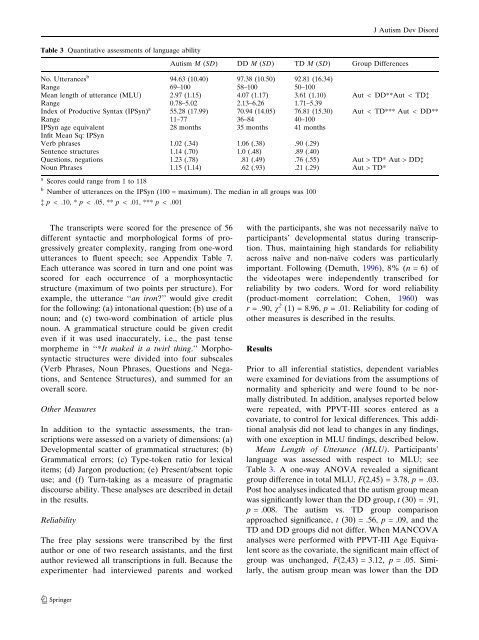
![PATROLOGIA GRECA E LATINA [Patrologiae cursus completus]. All ...](https://img.yumpu.com/50711133/1/184x260/patrologia-greca-e-latina-patrologiae-cursus-completus-all-.jpg?quality=85)
